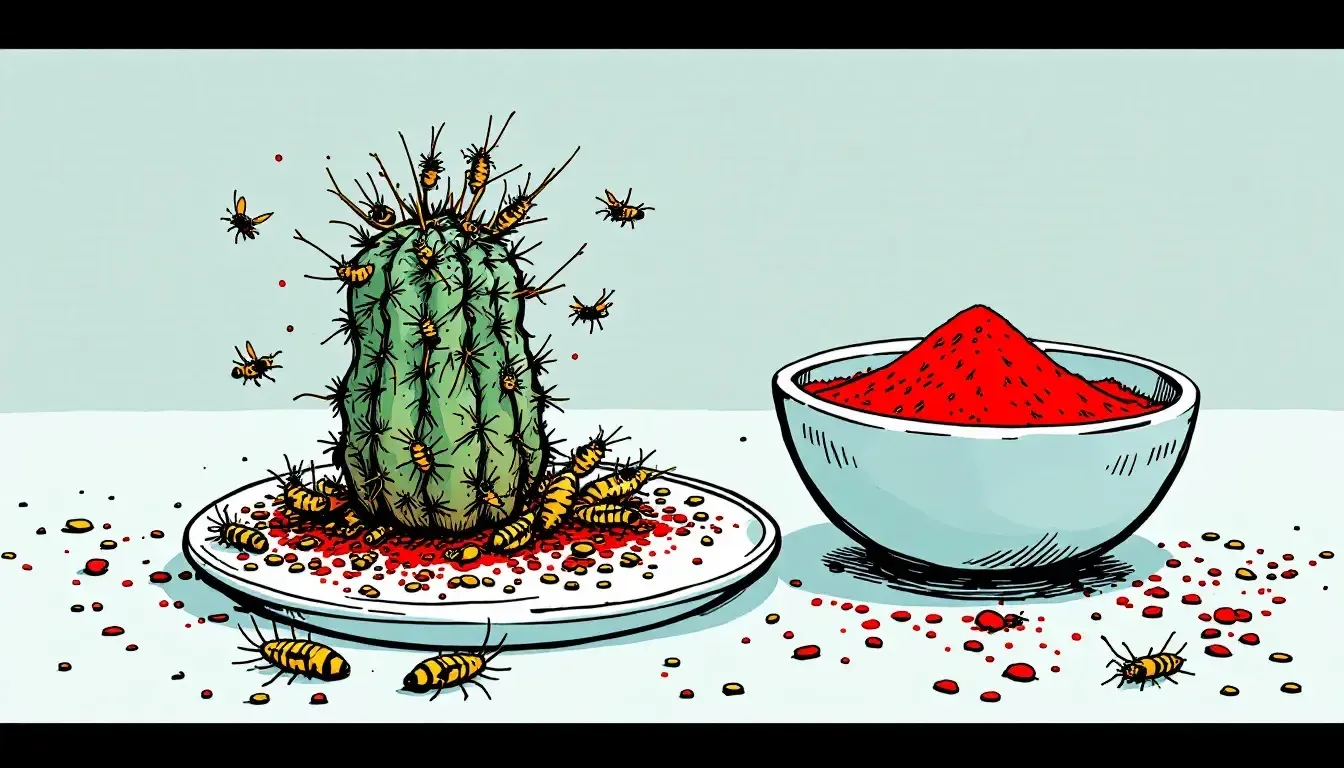When Tiny Bugs Became Precious Color

Rea,
Red is one of the hardest colors to find in nature. Think about it - while green plants and blue skies are everywhere, truly bright red is rare. That’s why red has always been special, used by royalty and for important occasions. But where did people get bright red color before modern chemistry?
When Spanish explorers arrived in Mexico in the 1500s, they were amazed by the brilliant red fabrics and cosmetics the Aztecs used. These reds were more vibrant than anything in Europe. The Spanish had a choice: keep this valuable secret to themselves (as was common with trade goods) or share the discovery with the world.
The source of this incredible red turned out to be something unexpected - tiny insects called cochineal that lived on prickly pear cacti. The Aztecs had been harvesting these bugs for centuries, carefully collecting them from the cacti, drying them in the sun, and grinding them into a fine powder. This powder created the most vibrant red dye the world had ever seen.
Harvesting these insects was painstaking work. It took about 70,000 dried insects to make just one pound of dye. But the result was worth it. By the 1600s, cochineal became Spain’s second most valuable export from the New World after silver. Pound for pound, this red dye powder was worth more than gold. European royalty wore clothes dyed with it, artists painted with it, and wealthy women used it as makeup.
What made this red so special wasn’t just its beauty - it was also stable. Unlike other red dyes that faded quickly, cochineal stayed vibrant for years. The Spanish kept the source secret for as long as they could, with many Europeans believing the red powder came from berries or seeds rather than insects.
The most amazing part? We still use this same red dye today. Look at the ingredients on bright red foods, candies, or cosmetics, and you might see “carmine” or “cochineal extract” listed. That’s right - the same bug-based color that colored the lips of European nobility hundreds of years ago might be in your strawberry yogurt or lipstick today.
Nature had already solved the problem of creating the perfect red, hiding it in plain sight on the backs of tiny insects. Like a treasure chest that looks ordinary from the outside but contains jewels within, these small creatures carried one of the most valuable colors in history.
Love, Abba
P.S. Next time you’re at the grocery store, check the ingredients on some bright red foods or drinks. If you see “carmine” or “cochineal extract,” you’ve found a food colored by this ancient insect dye!

